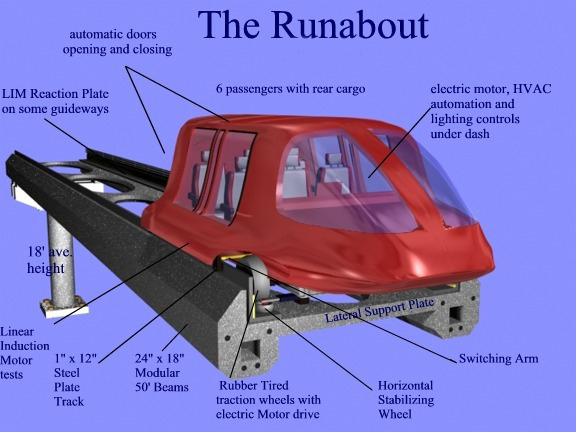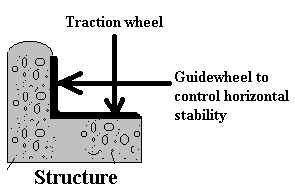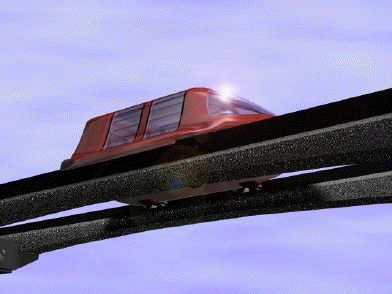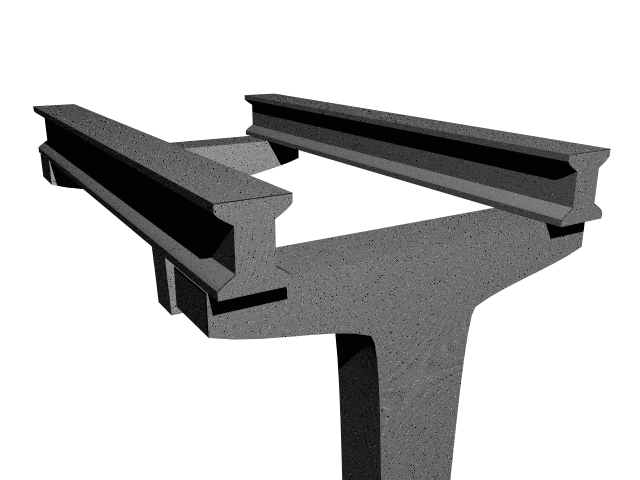
A PROTOTYPE of S.M.A.R.T.
Transport

Switchable: offline to local loops and to docking
stations means delivery to more destinations
Modular: Built off site in 50 foot elevated sections and carries a
mix of different vehicles
Automated: start up, speed, reporting, merging, switching,
docking , loading and stopping
Robotic: doors, loading, locking, lighting, propulsion, HVAC,
security and communications
Telematic: Interactive media in every seat that informs about the
stations on the route and links to Internet
OUR
DUAL BEAM GUIDEWAY ILLUSTRATED IN DENVER
The Denver Tech Center and Greenwood Village serve as a 5 mile
local loop model over a background of 50 million square feet of commercial uses and office
space supporting a daily population of 75,000 people. This area is currently
served with local circulator bus system, now free, provided by a group called the
Southeast Transportation Authority: (SETA)
THE TECHNOLOGY
COMPONENTS
The following matrix illustrates the component
pieces of our automated GUIDEWAY configuration.. It can be built first in a low speed
local loop configuration from $7.5 million per single lane mile and
later as a high speed line-haul configuration that we believe can be built for about $10
million per double lane mile. These conceptual illustrations show how our concepts
would look and operate. They have not been engineered yet, and may change with new
information. When the prototype engineering is available, it will be considered trade
secrets and will not be available to the public on the Internet. The Initial Research
Agenda will focus on combining beams with controls, switching and propulsion. The concepts
we are proposing, uses "interoperability" meaning it can transfer from a line
haul to a local loop for that critical last mile delivery that brings convenience to the
Ridership. In fact the nature of the guideway may evolve over the years and still maintain
this flexibility with new designs so long as there remains the critical topology shown in
this graphic:

Using this simple rubber tire concept to
control the vehicle, the guideway can take many forms which include space frame see
thru, solid, flat plate or dual beams as we show below. It could even be on the ground
like a curb and gutter pan (shown above) where feasible. It's propulsion power could come
from the guideway as we propose or it could be battery or fuel cell propulsion. The
automation controls would need to be standard. The icons below describe the components to
this system.
See Specifications
CLICK ON EACH ICON TO VIEW INTERACTIVE IMAGES OF ITS FEATURES. These are animations that require approximately ten minutes to download at 56Kbps or only seconds with a high bandwidth connection.

OPERATING POLICIES
THE
CERTIFICATION ISSUE
VIEW FROM GROUND AS MOST PEOPLE WILL SEE IT This concept illustrates the least visual intrusion from the smallest mass up in the air and the openness between the beams offers a very small area for snow and ice to accumulate. Smallest mass means least cost - estimated at one half of light rail.

LINE HAUL CONFIGURATION
- INTERSTATE HIGHWAYS
This is where automation can make a big difference by
carrying higher ridership(15 seats) much further distance more than local loops.
Once it is built, the majority of the farebox revenue can go to the bottom line
because of automation. The following animations show how such a system can be automated.
These designs are to illustrate concepts and are not yet engineered.
| A SKYWAY BREAKTHROUGH What is needed is an elevated GUIDEWAY that provides most of the functionality rather than being provided by the vehicle. Our GUIDEWAY will combine all these functions 1. Elevated for
non stop 2. The Automation Controls Automation requires a dedicated, exclusive, elevated Guideway. Any system at grade, will get caught up in the same traffic congestion it is trying to solve
|
 |